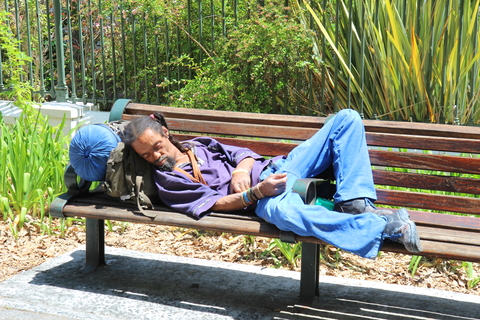Photo 47630336 © Louise Rivard | Dreamstime.com
Gauteng’s response to homelessness is a temporary solution to a structural problem
[first published in Daily Maverick]
By Noluthando Ngcobo, OIS Masters student
The Gauteng Department of Social Development needs a thorough analysis of the demographic profile of homeless people in the province to understand how economic transformation, the labour market and job creation for homeless people should look.
The South African Constitution affords all citizens the right to human dignity, healthcare, shelter and social security, and the government, through all its organs, must ensure that these rights are realised.
The Covid-19 pandemic revealed that the Gauteng Department of Social Development (DSD) had for many years neglected the homeless constituency. Although the DSD sought to provide temporary relief to homeless people through shelters, food, blankets and other services, the outbreak of the pandemic quickly showed the department to have no operational procedures in place or indeed a proper grasp of the depth of the problem.
This is partly because the homeless programme had been left solely to the municipalities. Considering that the department’s mandate is to provide integrated, comprehensive and sustainable social development, it should have invested in diagnosing the complex nature of homelessness before rolling out any intervention.
The demographic profile of a homeless person in Gauteng is predominantly that of a black man, mentally ill or on drugs. Many leave their homes in search of economic opportunities, but it is also common for people to be rendered homeless as a result of family conflict and abuse. Others are isolated by their families because they fail to meet social expectations, or are isolated because of crimes that they may have committed.
Homelessness in Gauteng includes those who live on the streets, those who hop from one overnight shelter to the next and those who are temporarily homeless because they work low-paying jobs and cannot afford to commute to work from various corners of the province.
Labour migration
Gauteng experiences an influx of migrants from both within and outside SA – mainly the SADC region – who seek employment opportunities, but in reality, find harsh economic conditions and homelessness. Although not all migrants are homeless, a significant number of homeless people are migrants who benefited least from DSD interventions during Covid because of inadequate documentation.
This informs the need for a strong framework to coordinate labour migration within the SADC region, which would greatly facilitate the department’s ability to operate.
Across the globe, population increases and uncontrolled urban growth are among the root causes of homelessness. In South Africa, about 62% of the population is concentrated in urban areas, which exacerbates existing challenges to service delivery and infrastructure developments.
Having scrutinised the DSD plans as published in 2010 to formulate an appropriate strategy to deal with the impacts of urban migration, it is without a doubt that the department has failed to implement and to consistently review and amend plans as social trends change.
South Africa’s unemployment rate sits at close to 33% to which the Covid pandemic contributed an additional three million who lost their jobs during the lockdown. In its annual performance plan, the department identified economic transformation and job creation as a priority legislative/policy directive. The DSD intends to realise this plan through programmes such as the Social Sector Expanded Public Works Programme, cooperatives and Community Nutritional Development Centres.
However, the plans lack sustainability and to some extent, foster dependency. These programmes, in their present form, do not translate to the self-sustainable livelihoods that the government seeks to create. The DSD needs a thorough analysis of the demographic profile of homeless people in Gauteng to understand how economic transformation, the labour market and job creation for homeless people should look.
For many homeless people, addiction may have been the cause of their homelessness or a habit they developed while on the streets. In 2022, the DSD launched a treatment programme to maximise admissions in 1,400 treatment beds and intensify aftercare, skills development, education and bursaries in Gauteng – a province in dire need of more treatment centres. But despite the ground won, substance abuse persists as a broad phenomenon where interventions must focus not solely on addiction but also on the growing illegal drug market.
What can be done?
- The DSD does not have any forward-looking policy on homeless people, and the municipalities, who have been running the programmes for much longer, only have draft documents as a policy reference. It is imperative that the DSD produces a framework to guide the department’s interventions;
- There is a disjuncture between what the DSD communicates in media reports and what it communicates internally; homeless programmes in the media are not reflected in department reports. Departmental reports should allow external readers to fully scrutinise how funding for programmes is being allocated; and
- The provision of temporary shelters should translate to adequate housing. While housing, like migration, is beyond the DSD’s jurisdiction, intergovernmental relations between relevant departments would mean more cohesive and substantial interventions.
Society’s general belief that people are homeless because of behavioural patterns which they had agency over belies the mediocre services to which homeless people are subjected. To be effective, the DSD needs to transcend generalised stereotypes and be guided by an in-depth diagnosis of the issue, not neglecting the harsh impact of structural factors.
Noluthando Ngcobo is a master’s student in the Organisational and Institutional Studies programme of the Public Affairs Research Institute at Wits University. This article is based on her research paper, The responses of the Gauteng Department of Social Development to homelessness during the Covid-19 lockdown: A case study of two Tshwane and Johannesburg homeless shelters.


